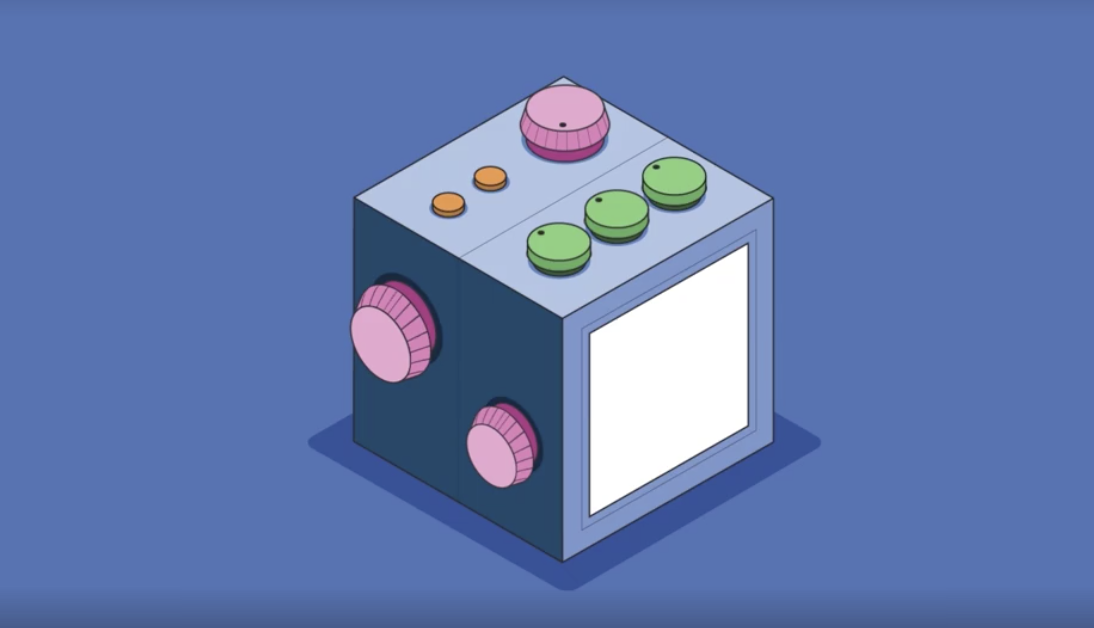[caption id="attachment_138615" align="aligncenter" width="1094"]

Facebook A.I. Video Series[/caption] Artificial intelligence (A.I.) is everywhere. If you’re using mobile or cloud technology, it’s probably a big part of the reason you enjoy various products or services. In an effort to demystify A.I. and how it’s used, Facebook is publishing a
set of videos that breaks everything down. The Facebook series is a self-conscious attempt to rid people of the vision of A.I. they've seen in movies, in which scientists fight to stop machines from destroying the world. According to
an official blog post, the videos focus in particular on the algorithms that undergird A.I.:
Many modern AI systems use artificial neural networks, computer code that emulates large networks of very simple interconnected units, a bit like neurons in the brain. These networks can learn from experience by modifying the connections between the units, a bit like human and animal brains learn by modifying the connections between neurons. Modern neural nets can learn to recognize pattern, translate languages, learn simple logical reasoning, and even create images and formulate new ideas. Recognizing patterns is particularly important — AI is good at recognizing patterns in large amounts of data, something that is not as easy for humans.
Facebook’s concept breaks A.I. into three categories for learning. Reinforcement learning is much like training a dog (it sits, you give it a treat; for A.I., the machine performs its task properly, and “gets a reward”). Supervised learning is more straightforward, with humans offering the machine the correct answer to a problem and letting it figure out whether it can come to a similar conclusion on its own. The third category, unsupervised or predictive learning, is the ‘scary’ artificial intelligence we tend to see in movies and television shows. In this learning style, a computer no longer needs a human to tell it what a tree or car looks like; it knows, and can deduce from observation what else may be a car or tree. It’s what makes services like Google Photos so good. The video series has an academic bent. Facebook admits the videos are meant for students or those interested in A.I.-related jobs, so grandparents or friends who
just don’t get how Facebook knew you were in that picture won’t glean much from them. But for those who are interested in taking a deeper dive into artificial intelligence, the series provides a nice introduction to concepts such as neural networks and gradient descent. If you really want to get into A.I. as a profession, Udacity has some
coursework available, and there are plenty of
open-source options as well.
 Facebook A.I. Video Series[/caption] Artificial intelligence (A.I.) is everywhere. If you’re using mobile or cloud technology, it’s probably a big part of the reason you enjoy various products or services. In an effort to demystify A.I. and how it’s used, Facebook is publishing a set of videos that breaks everything down. The Facebook series is a self-conscious attempt to rid people of the vision of A.I. they've seen in movies, in which scientists fight to stop machines from destroying the world. According to an official blog post, the videos focus in particular on the algorithms that undergird A.I.:
Facebook A.I. Video Series[/caption] Artificial intelligence (A.I.) is everywhere. If you’re using mobile or cloud technology, it’s probably a big part of the reason you enjoy various products or services. In an effort to demystify A.I. and how it’s used, Facebook is publishing a set of videos that breaks everything down. The Facebook series is a self-conscious attempt to rid people of the vision of A.I. they've seen in movies, in which scientists fight to stop machines from destroying the world. According to an official blog post, the videos focus in particular on the algorithms that undergird A.I.:


